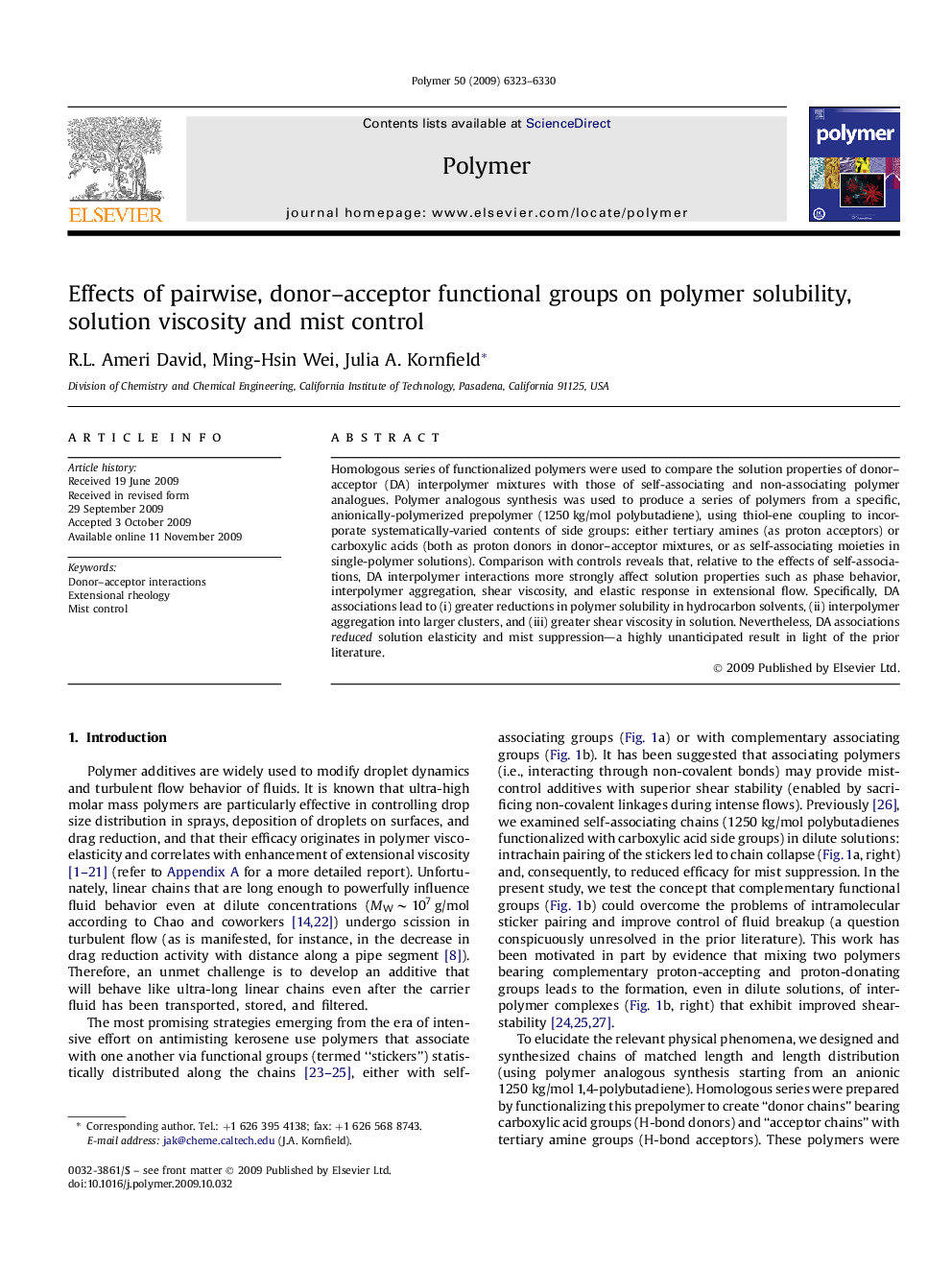| Article ID | Journal | Published Year | Pages | File Type |
|---|---|---|---|---|
| 5185526 | Polymer | 2009 | 8 Pages |
Homologous series of functionalized polymers were used to compare the solution properties of donor-acceptor (DA) interpolymer mixtures with those of self-associating and non-associating polymer analogues. Polymer analogous synthesis was used to produce a series of polymers from a specific, anionically-polymerized prepolymer (1250Â kg/mol polybutadiene), using thiol-ene coupling to incorporate systematically-varied contents of side groups: either tertiary amines (as proton acceptors) or carboxylic acids (both as proton donors in donor-acceptor mixtures, or as self-associating moieties in single-polymer solutions). Comparison with controls reveals that, relative to the effects of self-associations, DA interpolymer interactions more strongly affect solution properties such as phase behavior, interpolymer aggregation, shear viscosity, and elastic response in extensional flow. Specifically, DA associations lead to (i) greater reductions in polymer solubility in hydrocarbon solvents, (ii) interpolymer aggregation into larger clusters, and (iii) greater shear viscosity in solution. Nevertheless, DA associations reduced solution elasticity and mist suppression-a highly unanticipated result in light of the prior literature.
Graphical abstractDownload full-size image
